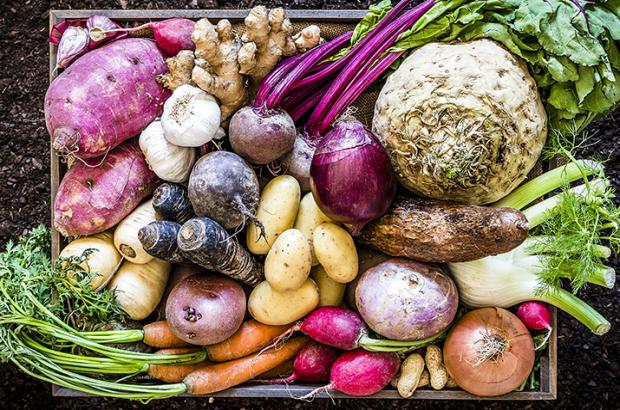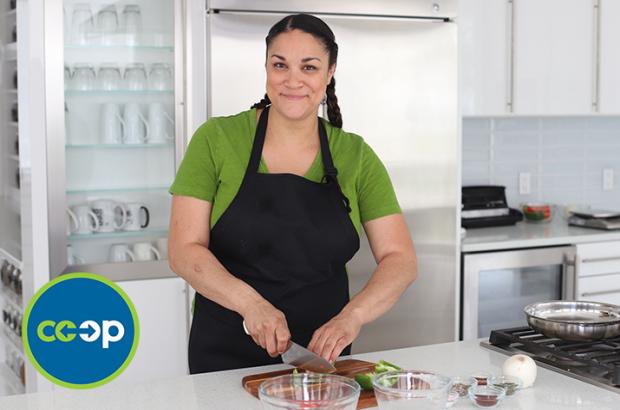Article
How to Plant Root Crops
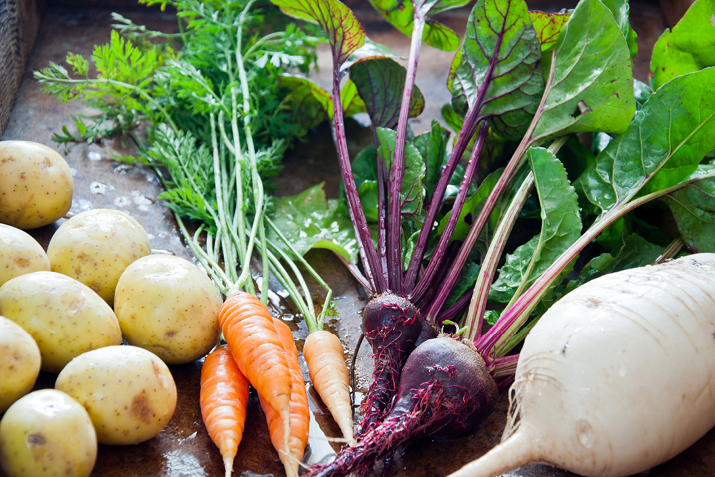
By Charlie Nardozzi for National Gardening Association
Root crops are buried treasures that can be difficult to get started, but rewarding to harvest. By root crops, I'm talking about radishes, carrots, beets, parsnips, and turnips. I'll skip potatoes for now since they grow differently and are quite easy to grow.
The keys to growing root crops are building a good seedbed, starting early, and staying on top of the thinning and weeding. Here's a step by step guide to growing good roots.
1. Build the bed
Root crops need well-drained, loose soil to grow and expand their roots. On all but sandy soil, the key is to build a raised bed. Raised beds allow the soil to warm up and dry out faster in spring. And, if built correctly, you'll never need to step on the soil, so it will stay loose and crumbly. Build the bed 8- to 10-inches tall, not more than 3 feet wide, and as long as you like. Border the bed with untreated wood, plastic wood, bricks, cement blocks, or stone. Avoid treated woods. You can also build a temporary raised bed in spring by just mounding up the soil and flattening out the top of the bed. You'll have to rebuild the bed each spring as it will naturally flatten during the growing season.
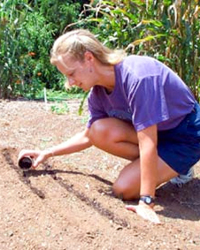
2. Clean the soil
Well, maybe you don't have to actually “clean” the soil, but removing sticks, rocks, clumps of clay can help provide the space for roots to grow straight and long. Root crops form taproots that need to tunnel into the soil. That's why they are so hard to transplant and best grown from seed directly sown into the garden.
3. Fertilize... but not too much
Root crops need some fertility to grow their best, but too much nitrogen fertilizer can cause hairy roots, or plants with lush green tops but small roots. Based on a soil test, add organic fertilizers that are higher in phosphorous and potassium than nitrogen. These nutrients are key to good root formation. Add a 1 to 2-inch-thick layer of finished compost before planting, but avoid adding fresh manures since they're can be high in soluble nitrogen. If you're growing in heavy clay soil, consider adding sand or potting soil to lighten the bed for better seedling growth. Keep the pH between 6.0 and 6.5 for best growth.
4. Know your roots
Some root crops, such as radishes, are quick to germinate and grow to maturity—usually within 30 days of seeding. Others, such as parsnips, take all season long (100 days) to mature. Knowing the days to maturity of your planting allows you to anticipate when to harvest. There are large-rooted carrot varieties that take up to 90 days to mature, or small-rooted varieties that mature in 50 days. You can harvest the same variety of beet at 30 days for baby beets, or let it mature another month for a full-sized root.
Select varieties based on your garden. In heavy clay soil grow more beets, radishes, and short- rooted carrot varieties, such as Little Finger and Thumbelina. You're more likely to get a good crop from these roots. Loose, sandy soil is good for longer/bigger rooted crops such as Imperator-type carrots (such as Atomic Red), parsnips, and turnips.
5. Time your planting
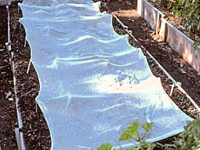
Root crops germinate best in 50°F to 60°F soil conditions. Start planting two weeks before the last frost date in your area. Flatten and smooth the top of the raised bed. Plant seeds in rows spaced according to the package directions or broadcast the seed. Cover the seeds with potting soil, sand, or a thin layer of fine garden soil. Moisten the bed. If the weather stays warm and sunny, cover the bed with a floating row cover or a thin layer of grass clippings to keep the bed moist. Keep well watered. Some roots, such as radishes, germinate quickly in 2 or 3 days. Others, such as carrots and parsnips, may take 2 to 3 weeks to germinate. You can continue to plant radishes, carrots, and beets every few weeks into the summer to enjoy a continual harvest of these roots.
6. Thin, thin, and thin again
Whether you sow in rows or broadcast, one thing will be certain- you'll have to thin your root crops. If you've had small or non-existent roots in the past, then chances are you didn't thin early or enough. One week after they germinate, thin your roots to 1- to 2-inches apart. Then a few weeks later, thin again. The distance between plants depends on the crop. For radishes and parsnips, thin to 2 inches apart. For carrots and beets, thin to 3- to 4- inches apart. For turnips, thin to 5 inches apart. Enjoy the young thinnings in your salads for an extra treat.
7. Weed, feed and water
Root crops don't compete well with weeds. Weeds can quickly take over and reduce the yields of your crops. Keep beds well weeded, usually by hand. If you weed by hoe, carefully cultivate so as not to disturb the roots.
Keep the bed well watered. Water deeply a few times a week rather than shallowly every day. This will encourage bigger and longer roots.
For all roots except radishes, fertilizer monthly with an organic granular fertilizer low in nitrogen. Keep pests away with row covers or organic sprays. In general, these root crops don't have many problems with insect and disease pests.
8. Eat and enjoy
Enjoy the bounty of your harvest. Pick radishes when the roots form, carrots and beets when the roots are large enough to munch and have colored up, and turnips when they are the size of a small ball. Even young turnips have a mild flavor and an apple-like texture and crunch if you peel them before eating raw. You can leave carrots, beets, turnips, and parsnips in the garden into the fall. The cooler weather helps turn these roots even sweeter with age.

